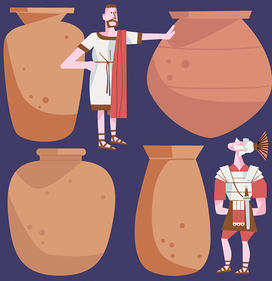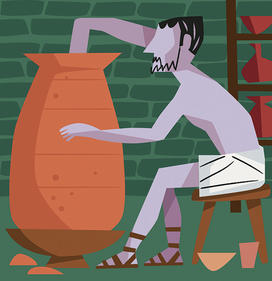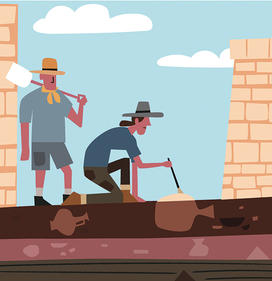Caroline Cheung Explores Ancient Worlds
Caroline Cheung took an unexpected detour from her intended path as a biochemistry major when she enrolled in the summer course Discovering the Romans after her freshman year at the University of California, Los Angeles. While pursuing a B.S. in biochemistry and a B.A. in classical civilizations, she heeded advice from her mentor in the UCLA classics department, Amy Richlin ’73, who encouraged her to explore archaeology to take advantage of her background in science. Cheung went on to earn an M.A. in classical archaeology from Florida State University and a Ph.D. in ancient history and Mediterranean archaeology from the University of California, Berkeley.
As an assistant professor in Princeton’s classics department, Cheung’s research focuses on the material culture of ancient Rome and what it can reveal about the daily life of ordinary people, especially marginalized groups, such as women and enslaved people, whose voices are not usually represented in the historical record. She also has a particular interest in agriculture and food production. “My father’s a chef and I’ve grown up around very good food my whole life,” Cheung says. She’s interested in the foods people ate and what they reveal about cultural trends.
Quick Facts
Title
Assistant Professor of Classics
Time at Princeton
5 years
Recent Class
The Science of Roman History
CHEUNG'S RESEARCH
A SAMPLING
MIGHTY VESSELS

Cheung’s forthcoming book, Dolia: The Containers That Made Rome an Empire of Wine, considers the dolium (plural: dolia), an extremely large ceramic vessel used to produce, store, and transport wine. By providing a means for wine to be moved in great quantities across vast distances, dolia enabled the growth of Rome’s large-scale wine industry. Cheung examines the dolium both as a piece of technology that profoundly shaped the Roman economy and as a lens into agriculture, food production, and the specialized knowledge of craftspeople who manufactured and repaired these vessels.
FORGOTTEN NAMES

Cheung has examined the dolium as a window into the lives of the ordinary Romans who made these essential objects. In an article in World Archaeology published in February, Cheung considers the workshops where these vessels were made and the identities of their makers, sometimes revealed by names stamped onto the vessels themselves. She argues that dolium makers exhibited advanced skills that gave them a distinct professional identity, even though many of them were also enslaved. As she notes, “just because [these craftsmen] are making highly valuable materials doesn’t mean they had a better or easier life.”
BURIED TREASURES

This summer, Cheung will return to Pompeii to resume her archaeological fieldwork for the first time since 2019. She is part of the research team of Pompeii I.14, a collaborative project focused on excavating a single block of the Roman city that was preserved in ash by the catastrophic eruption of Mount Vesuvius in A.D. 79. Cheung and her collaborators have discovered evidence that this block may have included a commercial zone with shops and restaurants. The team hopes that learning more about this block will lead to new insights about the city’s growth and development.












No responses yet